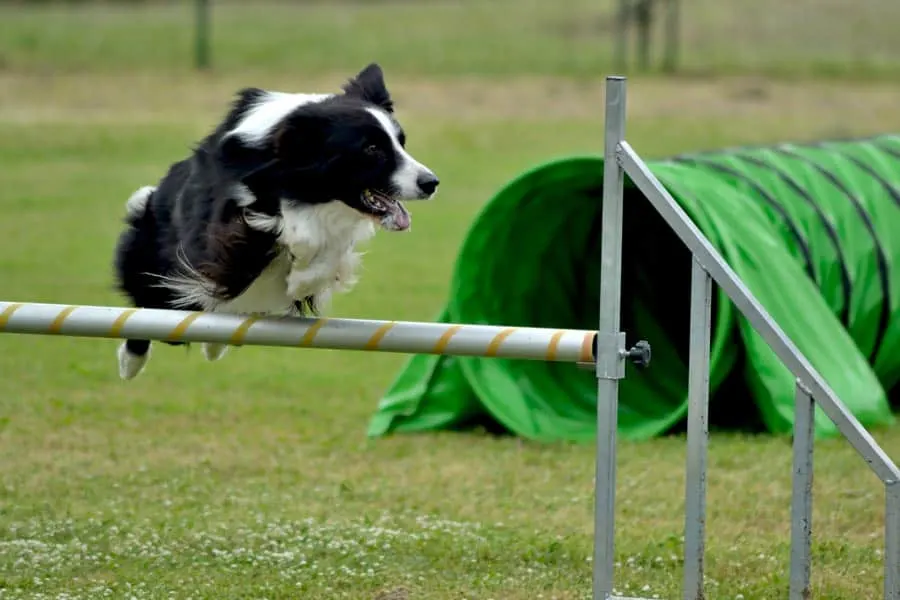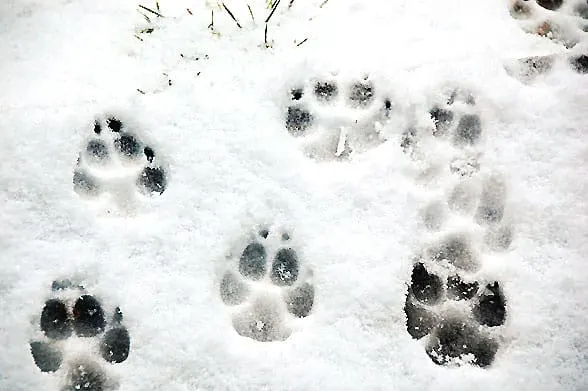We admit that for our dogs, their canine sports are pretty simple, usually involving walking, running and swimming. Barli and Tiki like nothing better than to enjoy a day’s hike, exploring new places, and the main competition they engage in is for treats along the trail.
But, for some dogs, their competitive natures lead them to explore a wide variety of sports, depending on their skills, their breed, and their size.
Disc dog, agility, flyball, lure coursing, mushing, herding, earthdog, dock diving, skijoring, and many other sports challenge dogs to try their skills—and challenge dog lovers to train them in a way that’s both safe and fun.
Responsibility for our dog’s safety, of course, falls on us—and that safety continues in competitive sports training.

Rachel Sentes, owner of a top-ranking flyball dog named Daisy, notes, “Safety is incredibly important not only during the training of the sport, but also when visiting other locations for tournaments. When training a dog, one has to remember that just because your animal runs fast and shows a lot of energy, it doesn’t mean that they aren’t prone to sprains and strains like any athlete. And that’s how training safely should be viewed- just like a professional athlete.”
Warm-Up Routines
Sentes has a warm-up routine with her Border Collies that begins with stretching out their limbs and warming them up slowly before the flyball competition begins.
“Note any resistance to stretches; any pulling back of their legs could indicate that they aren’t 100 percent,” says the Vancouver-based competitor. “Check their pads for tears or worn parts, as well as check their teeth before and after every event. If they are catching items, watch for any broken or chipped teeth, and be sure to note if there is any blood on any tennis balls. That could mean a tear, or a gum issue. When dogs yelp with a bad turn, they tend to just walk it off when they can. It’s up to you to stop them from participating and tend to them immediately. Dogs have a high threshold for pain so it’s up to us to set boundaries.”
Spot Potential Problems Early
Sentes notes that as with many health issues, the key is often spotting potential problems early.
“I pulled one of my dogs from flyball after noticing a slight hitch in her hip when she turned on the flyball box. Rather than keep letting her play, even though she didn’t exhibit pain, I ended up retiring her early from the sport.”
Now years since her retirement, Sentes’ dog has developed arthritis in the damaged spot. “However, if I had pushed her to keep playing, the outcome could have been much worse.”
Safety Precautions on the Course
Safety precautions taken during training continue on the course as well.
Sentes emphasizes before releasing a dog onto a course, “walk through and look for possible safety concerns such as small holes in the ground, pegs or poles set in the ground that are sticking up, equipment that hasn’t been anchored down properly (one agility dog lost its life because of an improperly set tunnel), and make sure your dog is thoroughly familiar with the equipment before using it.”
Joint Health in Competing Dogs

With large dogs, joint health is always a worry (we really learned that after Irie’s TPLO surgery for an ACL tear) so we had to wonder about joint health in competing dogs, especially in medium, large and giant breeds.
According to veterinarian Tracy Gillett, “Any sport that pushes the physical limits of your pet’s body can put them at risk of injury which is why it is so important to keep the joints healthy and supported. Sports such as flyball and agility courses can be great fun and are a wonderful way to bond with your dog. They can also put extra stress on the joints so it is important to speak with your veterinarian and see what joint supplements would be helpful to ensure the knees, hips and elbows stay healthy.”
Skin Health When Competing
Along with joints, skin is another concern, depending on the sport.
Gillett explains, “Maintaining skin health is important for pets who participate in sports such as dock diving, earthdog and anything else that exposes them to harsh or moist conditions. The skin is your dog’s largest organ and helps keep them protected by regulating body temperature, eliminating toxins and guarding against environmental pathogens such as bacteria and viruses.”
Staying Safe During Winter Dog Sports

Winter sports bring their own concerns.
Living in Texas, we don’t have to worry about snow and ice except on rare occasions—but for those dogs participating in winter sports like mushing or skijoring, extra attention should be given to exposed skin and paw pads.
Gillett recommends that training sessions be moved indoors if there is a risk of extreme temperatures but, if training outdoors, be sure to dress your dog for the weather.
“Puppies, seniors and short-coated dogs will appreciate the extra insulation that a warm sweater can provide,” she points out. Toy and small breeds often need winter insulation more than their larger breed counterparts.
Pet living expert Kristen Levine recommends going high-tech to help owners keep tabs on their dogs’ condition by using an activity monitor. “The newest feature in activity monitor devices for dogs is the ability to track ambient temperature. When you’re training your dog for winter sports – such as skijoring, mushing or hiking – it’s important to know when conditions are too cold. This latest feature also alerts you when conditions are too extreme, and can help combat preventable pet deaths [from] hypothermia and heat stroke.”
Keeping an Eye on Stress Levels
Regardless of the season, the sport, and the size of the dog, however, one factor remains the same: competition can induce high stress levels.
Border Collie lover Sentes emphasizes, “take care of your dog mentally. Dog sports can be very stressful on a dog. Make sure that if they exhibit any behaviors that are not normal: excessive pacing, panting, being high strung all the time (tough to tell on some dogs), make sure they get much needed quiet time away from the game to calm down. Being tense in body and mind can affect their health.”
Just like the hikes we enjoy with Barli and Tiki, competitive canine sports should be an experience both you and your dog enjoy.
“Dog sports are a wonderful way to keep dogs fit and healthy,” points out Gillett. “With rising obesity in both ourselves and our pets it’s more important than ever to stay active. Dog sports are a wonderful way to achieve this. Above all else, enjoy this wonderful bonding experience with your dog and have fun!”
First published in 2014.
- Review: Jimmy BX7 Pro Anti-Mite Vacuum Cleaner - December 16, 2024
- 🎉 GIVEAWAY: Lord of the Pets Portrait of Your Dog! - November 26, 2024
- Review: Lord of the Pets Portraits - November 17, 2024
